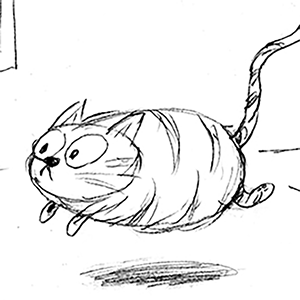Poultry industry pushes back as food safety group cites salmonella contamination
Published in News & Features
A new report based on government inspection documents shows salmonella is widespread in U.S. grocery store chicken and turkey products. But because of how the pathogen is classified, the federal government has no authority to do much about it.
Farm Forward, an organization that advocates for farmworker rights and humane farm practices, released a report this week that examined five years of monthly U.S. Department of Agriculture inspections at major U.S. poultry plants. It found that at many plants, including those that process and sell poultry under brand names such as Foster Farms, Costco and Perdue, levels of salmonella routinely exceeded maximum standards set by the federal government.
"The USDA is knowingly allowing millions of packages of chicken contaminated with salmonella to be sold in stores from major brands," said Andrew deCoriolis, the organization's executive director.
Some 1.3 million Americans are sickened each year by eating salmonella-contaminated food, according to the U.S. Centers for Disease Control and Prevention. Most people have only mild symptoms, but others suffer diarrhea, nausea and vomiting. Roughly 19,000 people are hospitalized annually, and an estimated 420 die from the infected food.
Chicken and turkey account for nearly a quarter of all salmonella infections, according to a 2021 government report on food illness.
The USDA's Food Safety and Inspection Service inspects poultry plants monthly. The new report shows that five U.S. poultry plants exceeded maximum allowable salmonella contamination every month from 2020 to 2024. These included a Carthage, Missouri, turkey plant owned by Butterball, a Dayton, Virginia, turkey plant owned by Cargill Meat Solutions, and a chicken plant located in Cunning, Georgia, that is owned by Koch Foods. A Costco chicken producer, Lincoln Premium Poultry, exceeded the standard in 54 of 59 inspections.
"Lincoln Premium Poultry treats the safety of its products as an utmost concern," Jessica Kolterman, the company's director of administration, said in an email. "When the United State Department of Agriculture reports are updated and published, they will show that we have enhanced our standing. ... We will continue to improve our processes."
A spokesperson for Butterball said the company "takes food safety very seriously and follows all USDA and FSIS regulations and inspection protocols." The spokesperson said facilities are subject to rigorous, continuous oversight, and they are "constantly reviewing and improving our food safety programs to ensure we meet or exceed government standards."
Cargill, Perdue and Koch Foods did not reply to requests for comment. Foster Farms directed questions to the National Chicken Council, the industry's trade group.
"Consumers should not be concerned," said Tom Super, a spokesman for the chicken council. He said the report was "unscientific" and described Farm Forward as an "activist organization whose stated goal is to end commercial chicken farming."
Both Super and Bill Mattos, president of the California Poultry Federation, said poultry is safe when cooked to 160 degrees, and knives, cutting boards and other items that may have come into contact with raw meat are disinfected and cleaned.
"All chicken is safe to eat when properly handled and cooked," said Mattos, noting that annually "Californians eat more chicken than any other state ... 110 pounds per person!"
The report also suggests that the federal government's standards for acceptable levels of salmonella are unduly high, and potentially put American poultry consumers at risk.
For ground chicken, the USDA allows 25% of samples at a plant to be contaminated. For ground turkey, 13.5%. Chicken parts should not exceed 15.4% of samples contaminated, while the number is 9.8% for whole chickens.
"I don't know, but seems common sense to me that if you allow for a lot of salmonella, a lot of people are going to get sick," said Bill Marler, an attorney with Marler Clark, a national food safety law firm.
When inspectors visit a plant, they do not assess the meat's bacterial load, nor do they determine the strain of bacteria found on the product. They just test for the presence of the bacterium — it's either there or it's not.
According to Marler and Maurice Pitesky, a poultry science expert at UC Davis, there are hundreds of strains — or serotypes — of Salmonella. Most are considered harmless, but roughly 30 are known to be potentially lethal to people.
As a result, the USDA inspections don't give a clear picture about what's there, Pitesky said.
"When I hear something has salmonella, I'm like, 'OK, first question: I want to know its serotype. What kind of serotype is it?' Because that that's really the relevant piece of information," he said.
When inspectors find a plant has exceeded the salmonella standard, there is very little they can do except note it. The agency has no authority to enforce the standards.
Marler said in the 1990s, after four children died and hundreds of people got sick eating ground beef contaminated with E. coli sold at Jack in the Box restaurants, the agency decided to classify the bacterium as an adulterant. That designation meant the USDA could stop the sale of contaminated products, or shut down a plant that failed inspections.
He said the beef industry initially pushed back, fearing it would lose money — which it did, at first.
He said the USDA started doing retail testing, "and for a while, it felt like there was a recall a week — you know ... 50, 100, a thousand pounds here, a million pounds there, even 10 million pounds." Eventually, however, companies started testing their products "and coming up with interventions to get rid of it. And you know what? The number of E. coli cases linked to hamburger plummeted."
He said now he sees a case only once in a while.
"I kind of look at that and think, well, if you get salmonella out of chicken, you'll probably reduce those cases too," he said.
Pitesky said that salmonella is notoriously difficult to get rid of. It can be introduced to flocks from wild animals, such as birds, rats, mice and other wildlife. It's also found in the intestines of chickens, on their skin, feathers and feet, and it spreads among them when they poop, urinate and walk around in shared bedding, etc.
However, Marler thinks it can be controlled.
"Yeah, it's difficult," he said. "But you can do a lot of things. And this might piss people off, but you could eradicate flocks with salmonella. They do it in the EU all the freaking time."
The European Union considers salmonella an adulterant, and require producers to reduce and control it via biosecurity, testing, vaccinations, recalls and occasionally depopulation.
"The fact is, if you make salmonella contamination expensive, if recalls exist and people feel embarrassed that they're producing food that is making people sick or killing them, they'll want to change their behavior," he said.
©2025 Los Angeles Times. Visit at latimes.com. Distributed by Tribune Content Agency, LLC.






Comments